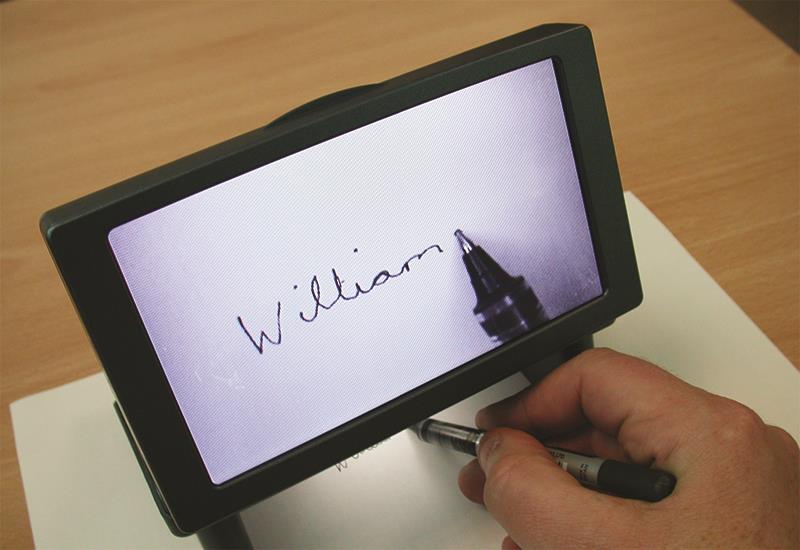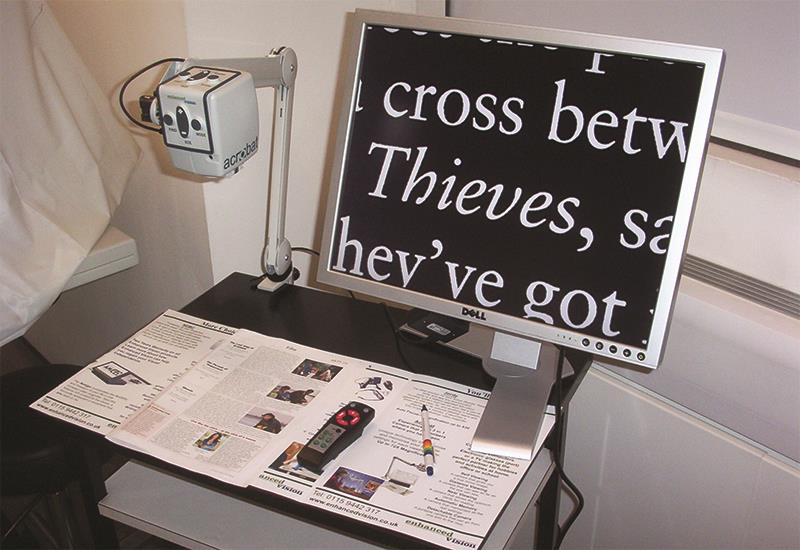With more than 200 people being diagnosed every week with an eye condition in work which cannot be corrected by the wearing of glasses or contact lenses, there is a lot of people struggling to keep working. Many will even fear for their future employment prospects and may not get the advice and support they need. Here are some key points that an eye care practitioner might offer to a visually impaired patient who presents with such worries.
Carry on working
Do you keep trying to work in your present job, retire or try to live on disability benefits? If you enjoy working, it can be hard, and you may not be able to afford early retirement, but how can your current workplace be adapted? It is often much easier to remain in your current employment than try to find new work.
Time to think
Avoid acting on impulse, because vision loss does not mean job loss. You may be suffering from shock at the diagnosis, and may experience a form of grief and loss regarding your vision. Your thoughts may be that you can no longer carry out the tasks you are employed to do.
Yet there is lots of help and assistance available and a specialist visual impairment work-place assessor can assess your needs and recommend solutions to your difficulties to ensure you get the correct reasonable adjustments in place to carry out your role effectively.
What’s your job?
Talk to your workplace assessor about what type of work you do, and where and when you are experiencing visual difficulties. The more help and advice you can get to maximize your existing vision, the more effectively and safely you will be able to continue working.
Workplace adjustments
You may be having trouble with reading text on paper, completing forms, participating in team meetings or training. You may be having difficulties with the colour on your computer screen, font size or even just finding the cursor on the screen. Your text on the keyboard may be difficult to see, and you find yourself with neck and back problems you have never experienced before.
You may be troubled by headaches and need to explore the reason why; the lighting in your place of work may not be sufficient. You may not feel confident navigating the workplace, negotiating stairs, or new areas to work. You may be making mistakes at work, or inadvertently bumping into things. Perhaps your having difficulty recognising your colleagues.

Figure 2: Help may be available to provide you with the necessary tools to live and work as independently as possible
You, the people you work with, including your employer, may have limited experience or knowledge about vision loss and low vision. A visual impairment specialist workplace assessor can help you to establish the difficulties you are having at work, understanding your individual needs and what workplace adjustments can be put in place to assist you to overcome the barriers you are facing.
There are many solutions to these issues; for example, magnifiers suitable for your needs, software that is able to read or magnify your screen, keyboards that are larger and easier to see. Emotional support/job coaching to help you come to terms with your acquired sight loss. Lamps and lights that emit daylight rather than yellow light.
There is a vast array of specialist equipment available, and the important factor is for your employer to arrange a workplace needs assessment specifically in visual impairment. This person will be trained to identify and assess your individual needs, make the right recommendations for equipment and signpost you to the correct services to help overcome the barriers you are facing. The assessor will take a holistic approach ensuring your health and wellbeing in all aspects of your life.
A realistic outlook
Are there any tasks which you need to accept you can no longer perform? More obvious things are driving a vehicle, handling or moving equipment or potentially dangerous or hazardous items.

Figure 3: Modern CCTVs offer a variety of screen and audio options in the workplace
Make a list of the essential tasks in your job that you will need to do to remain in your current employment. How can these be resolved? Or is there a member of the workforce who could perform a difficult or impossible task for you? Is there another responsibility that you could perform to replace this?
After a diagnosis of sight loss, talking to your employer in a realistic way, offering pragmatic suggestions and negotiating options, is vital, not only for your health and wellbeing but also for your employer to totally understand the difficulties you are experiencing.
Employer perception
You may be the first person your employer has come across who has a visual impairment. Some employers may embrace this, ensuring you have all the correct reasonable adjustments in place to fulfil your role, others may not know where to start.
They may not be aware of all the technological and environmental solutions that can aid you in your role. Some employers may think ‘how will you use a computer?’, ‘will you be safe carrying out your role?’, but much of this is because employers do not know where to begin when seeking help.
Learning curve
As the change in your circumstances is new to you too, you will begin discovering more about workplace adaptations and the technology that can support you best.
It’s off to work I go
Getting to and from work may present additional difficulty but there are solutions to this and your work place assessor can advise. When you arrive at work, you may have difficulty moving around your job site. Professionals, such as a rehabilitation officers, can give you huge support and teach you how to orientate yourself. They will take a holistic approach, helping you to manage all aspects of your daily life and giving you the necessary tools to live and work as independently as possible.
Equality act 2010 — some key points
- The Equality Act 2010 legally protects people from discrimination in the workplace and in wider society.
- It replaced previous anti-discrimination laws with a single Act.
- You are disabled under the Equality Act 2010 if you have a physical or mental impairment that has a ‘substantial’ and ‘long-term’ negative effect on your ability to do normal daily activities.
- The Equality Act 2010 does not apply to Northern Ireland.
- Service providers are required to make changes, where needed, to improve service for disabled customers or potential customers.
- There is a legal requirement to make reasonable changes to the way things are done (such as changing a policy), to the built environment (such as making changes to the structure of a building to improve access) and to provide auxiliary aids and services.
Further information
- www.visualisetrainingandconsultancy.com/consultanc...
- www.rnib.org.uk/search/site/employment
- Optician will be publishing a CET article on the role of the rehabilitation officer in the summer
Daniel Williams is the founder of Visualise Training and Consultancy, working with organisations to improve accessibility for customers and employees with disabilities and a former young person’s mentor with the RNIB.
